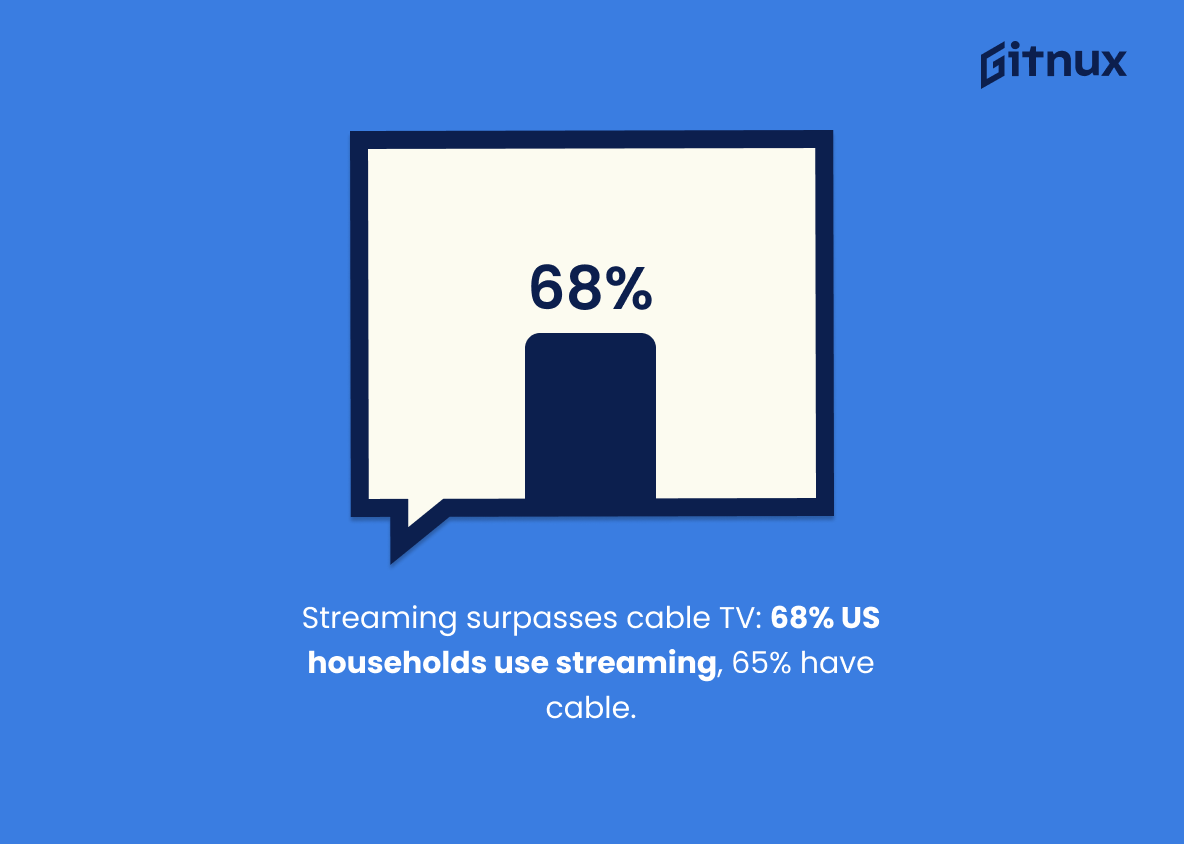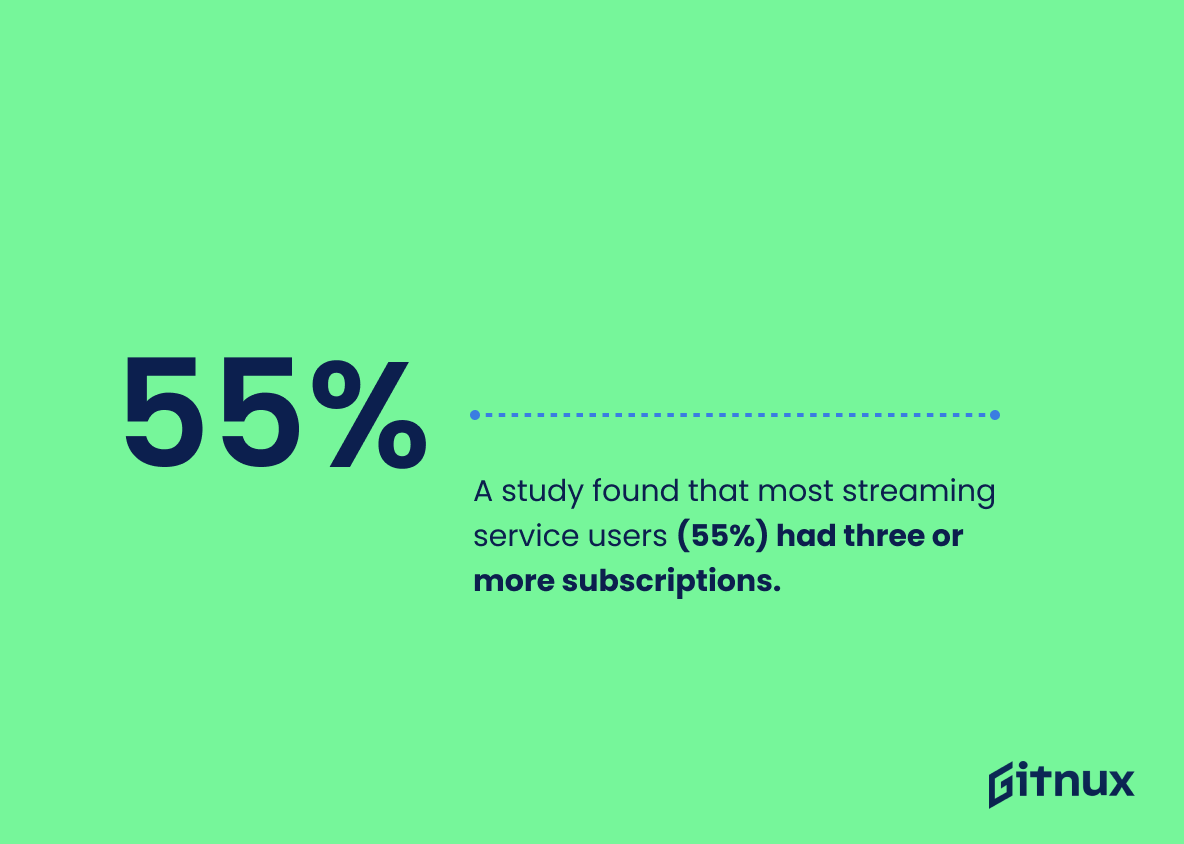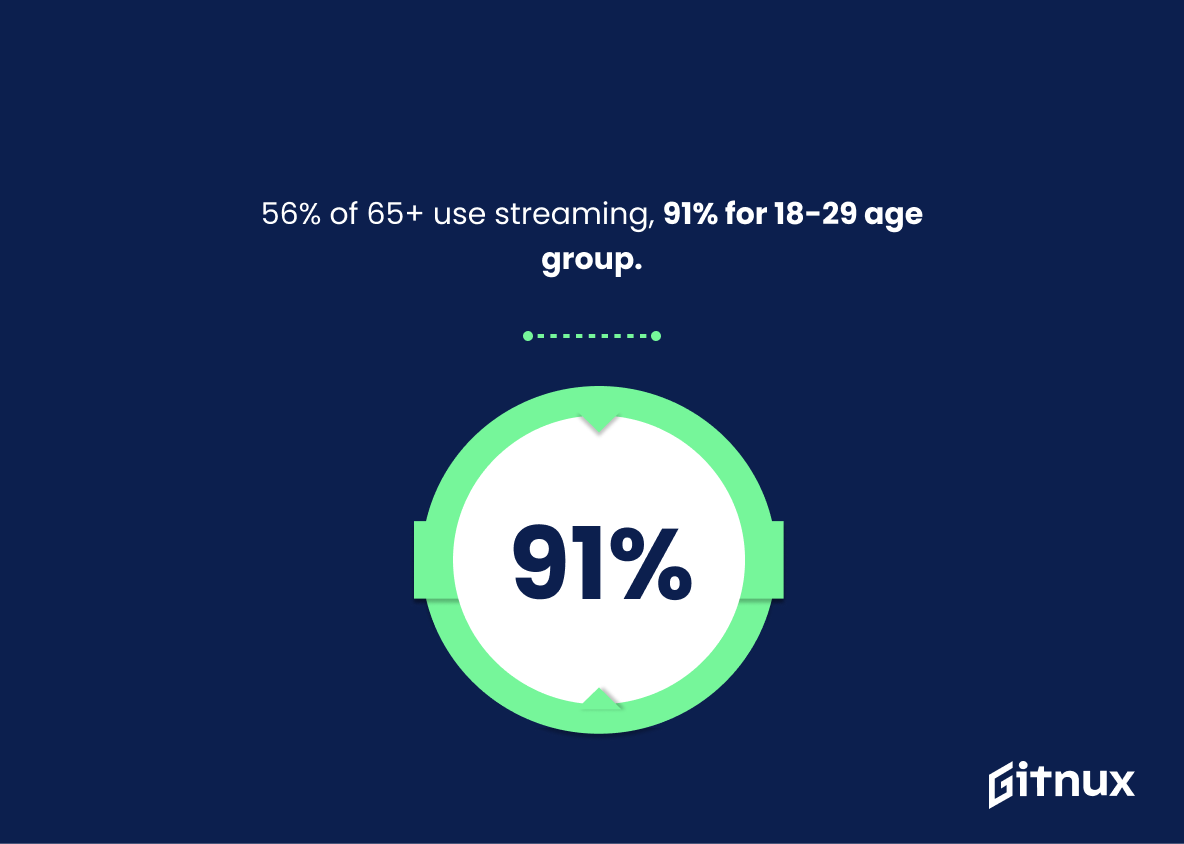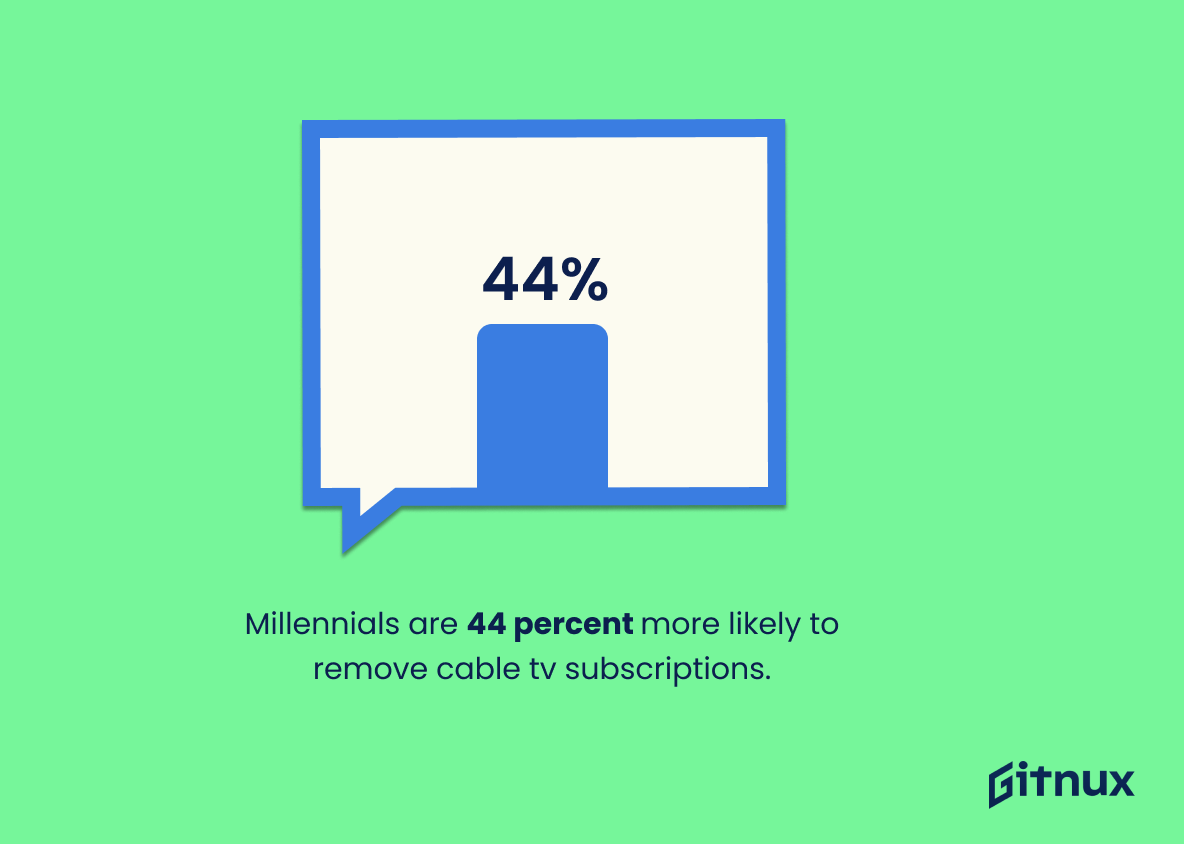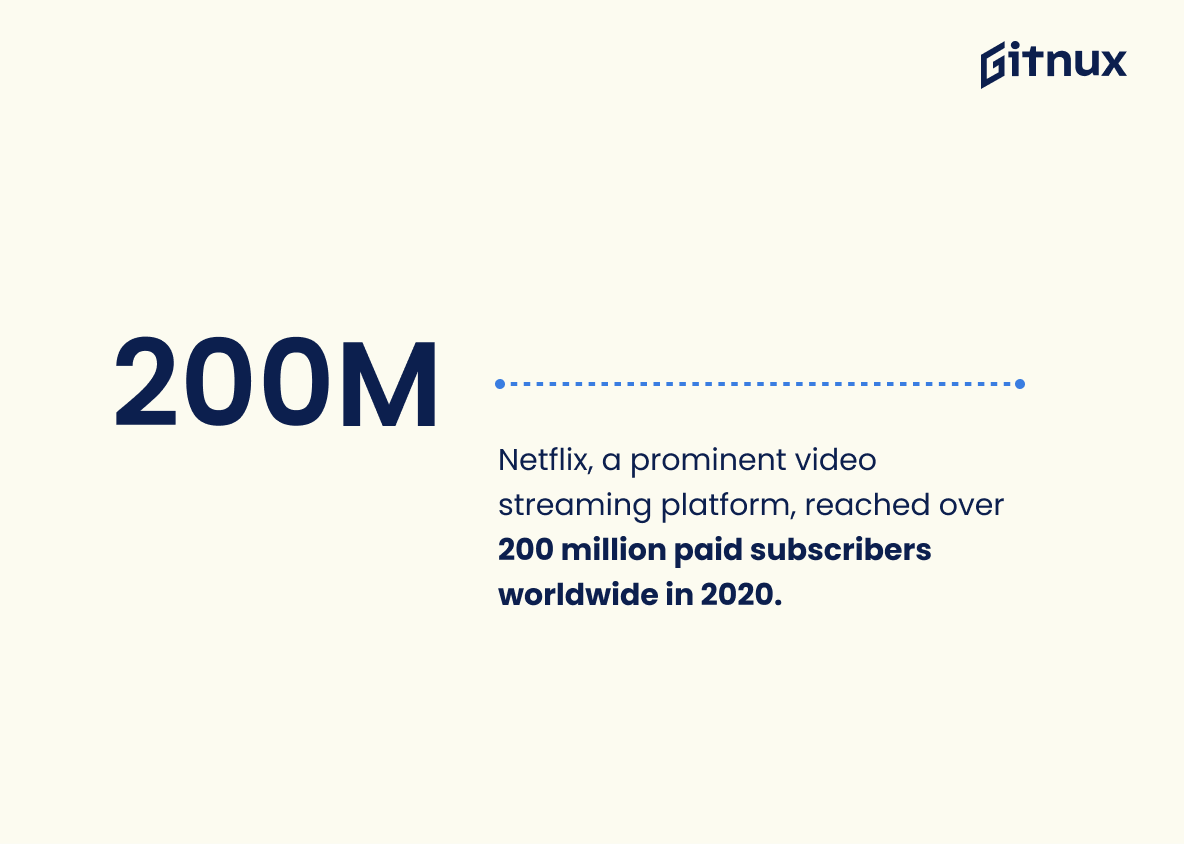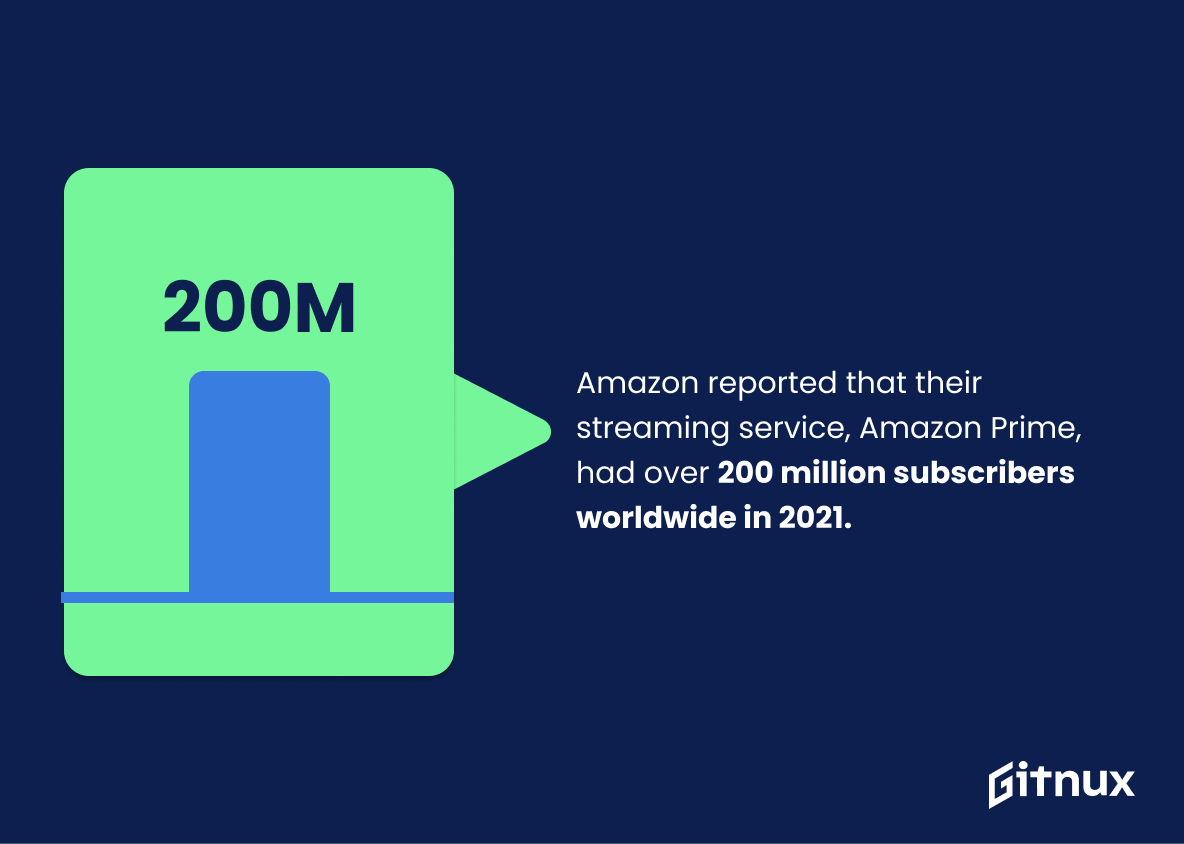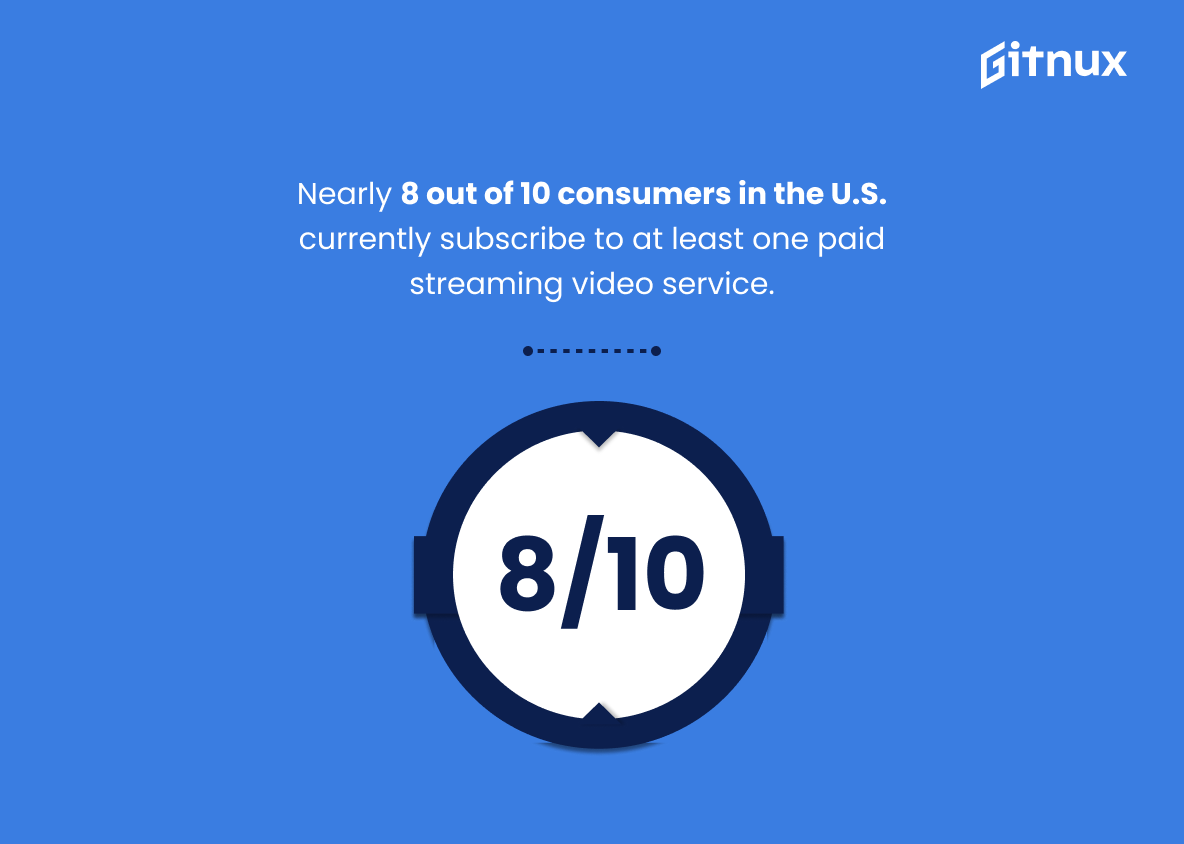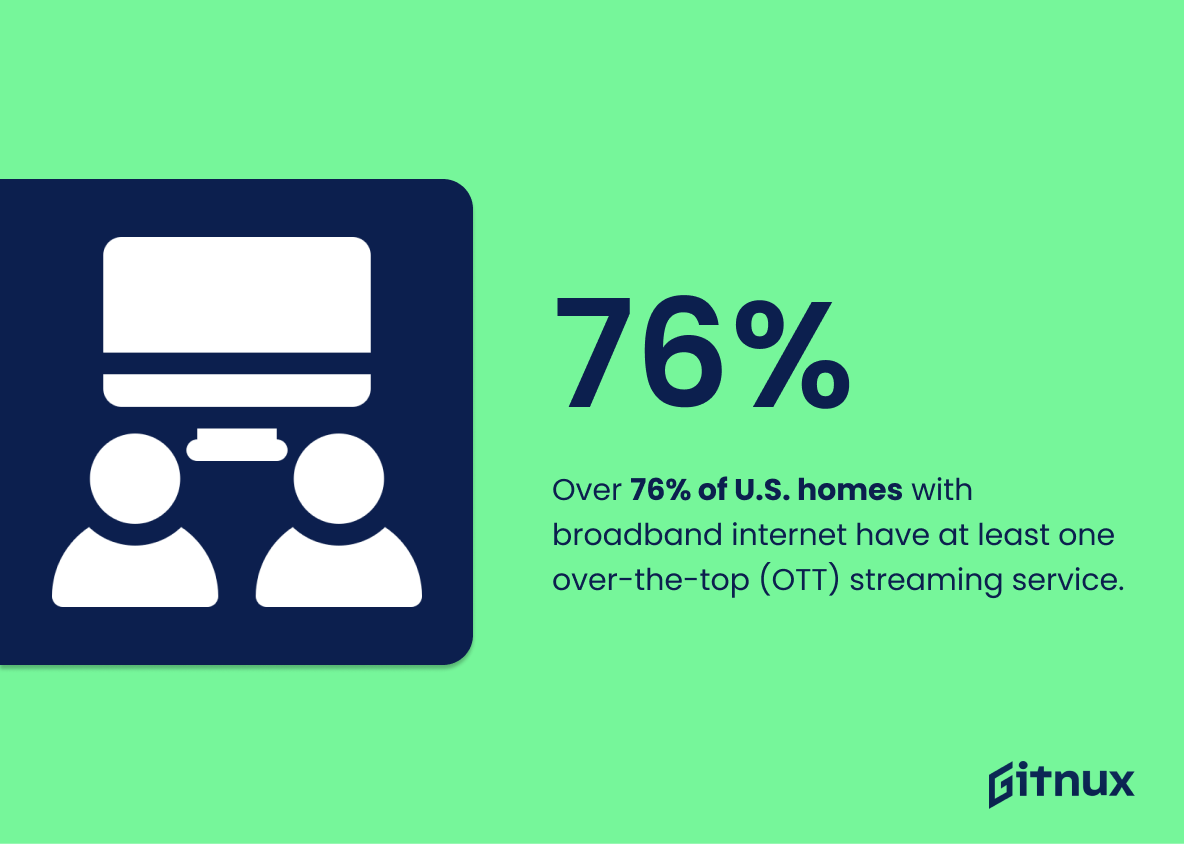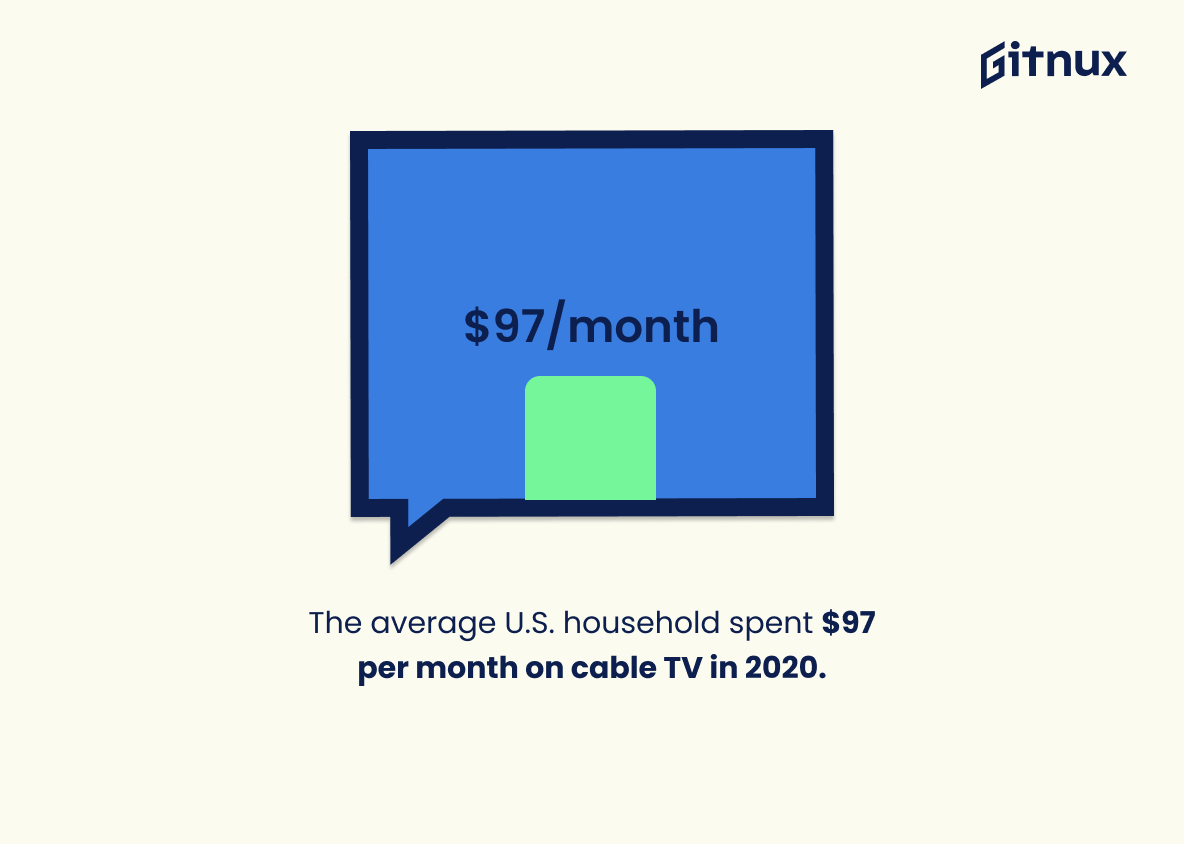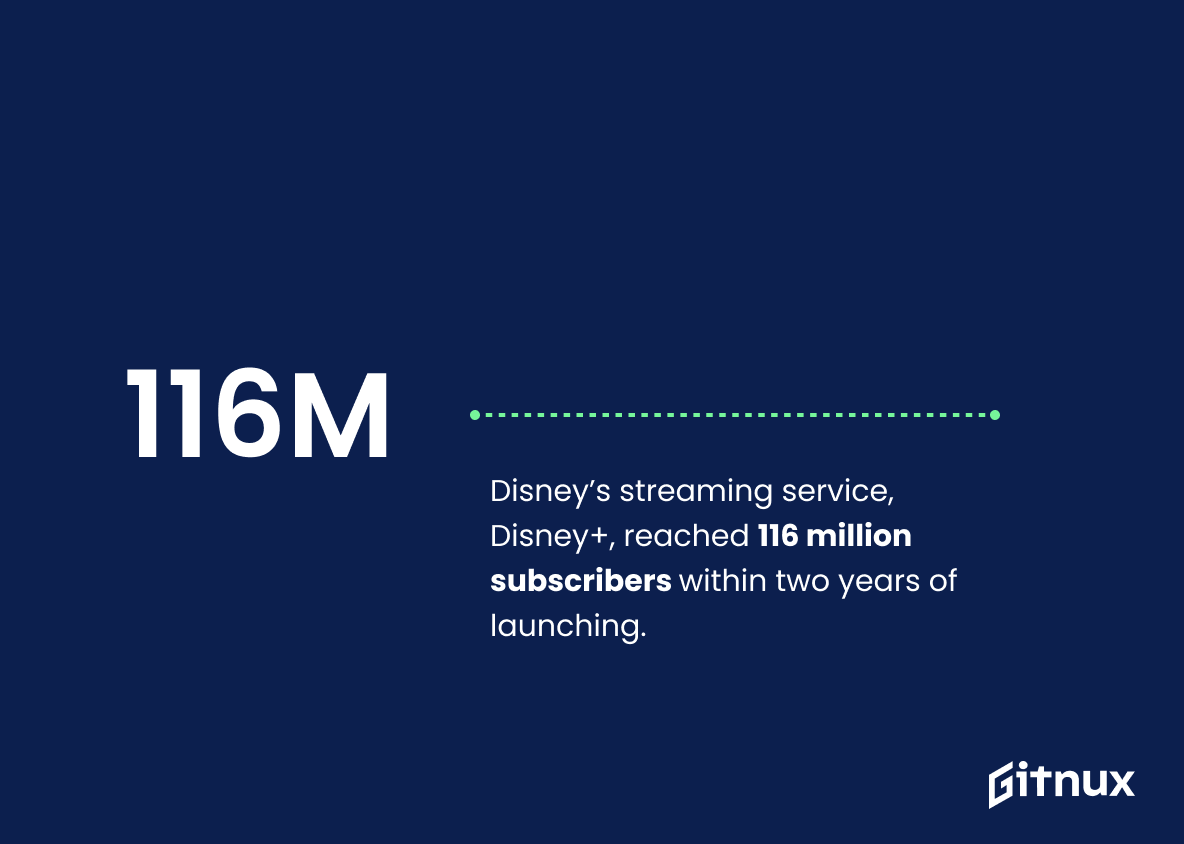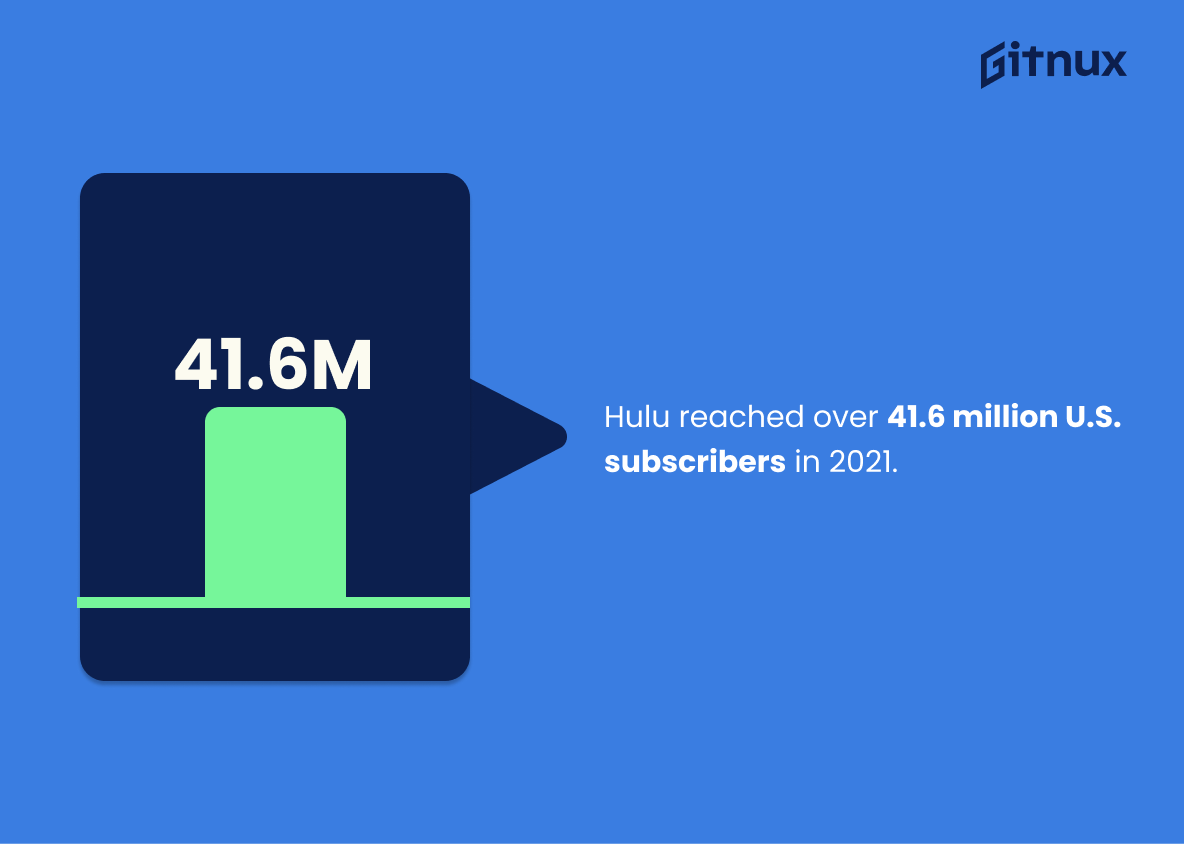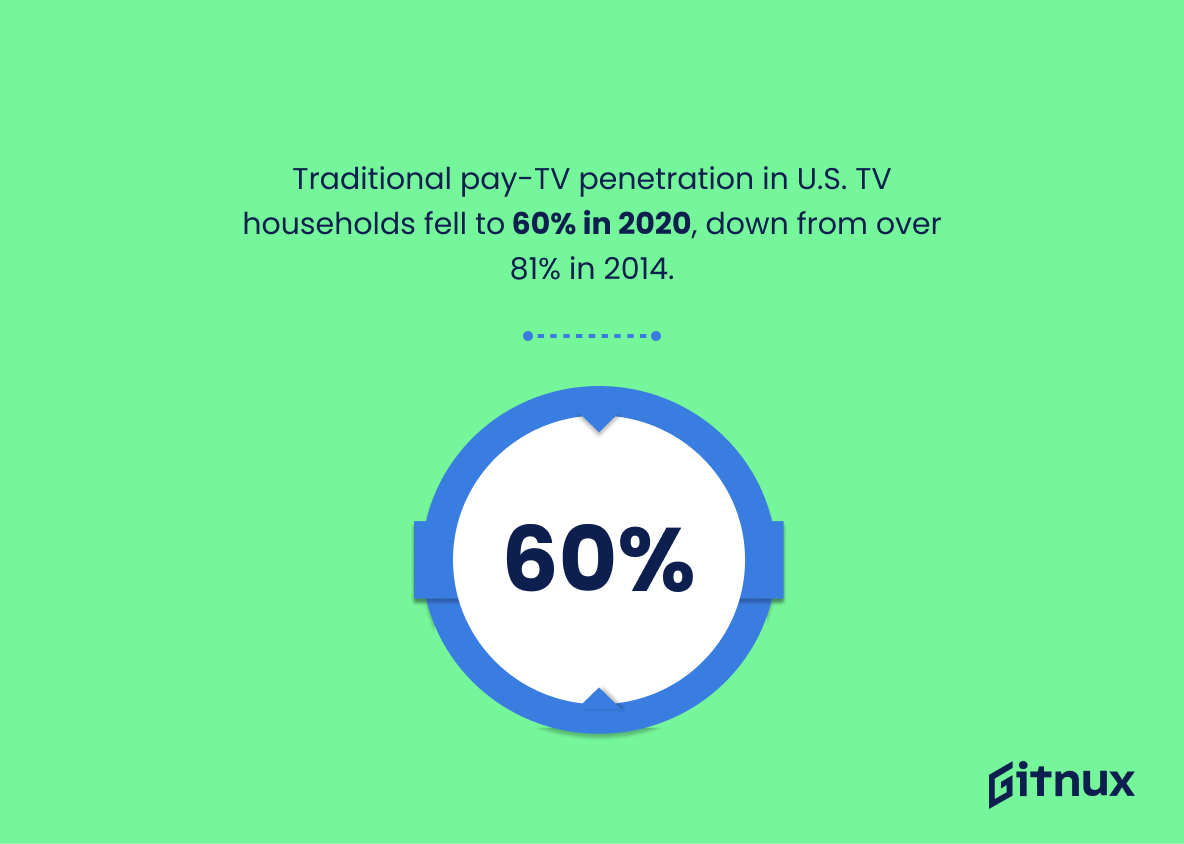In the ever-evolving digital world, the way we consume media has drastically transformed. Streaming services have quickly risen to compete with traditional cable television, leading many to cut the cord altogether. But how do these two titans of entertainment truly stack up against each other? Is one definitively better than the other? We’ve delved into the world of Streaming Vs Cable statistics to give you an objective, comprehensive analysis of the current state of play. This blog post aims to demystify the complex landscape of screen-based entertainment and help you make an informed decision about your viewing preference. Whether you’re a devoted cable subscriber, an ardent streamer, or simply an interested observer, this comparative exploration will enlighten and engage you with the latest insights of this media battleground.
The Latest Streaming Vs Cable Statistics Unveiled
As of 2021, there were 46.55 million households subscribed to cable television in the United States, a drastic decrease from the 53.51 million households in 2019. [Source: Statista]
This eye-opening statistic functions as a barometer gauging the changing winds in the entertainment industry. Reflecting a dramatic shift from traditional cable television to streaming platforms, the numbers not only record a notable exodus but project an oncoming storm for television titan. Between 2019 and 2021, nearly seven million households cut the cord, a trend that emphasizes the intensifying rivalry between streaming and cable services. This plunge in cable subscribers in favor of more flexible, on-demand entertainment options elucidates why streaming is not just a competitor, but potentially the successor in this media battle. The decline is not just a footnote, but broadcasts a loud and clear message to industry stakeholders – adapt or face the risk of obsolescence.
Streaming has managed to overtake traditional cable TV, with 68% of US households being connected to a subscription streaming service compared to 65% having traditional cable subscriptions. [Source: Deloitte]
In the grand narrative of Streaming Vs Cable, this statistic wields a critical storytelling sword. Tipping the balance is our protagonist, Subscription Streaming Services, seizing dominance over the long-reigning champion, Traditional Cable TV. With 68% of US households bending the knee to the streaming services, we see a fascinating shift in the kingdom of home entertainment. This is not a minor skirmish but a significant conquest, holding just a narrow 3% lead over the traditional cable subscriptions at 65%. This suggests a powerful trend, an insurgency, a tale of modern technology toppling the old regimes. Drawn from Deloitte’s chronicle, this surprising twist indicates not only a changing dynamic in viewership habits but also in how we appreciate and consume our favorite shows in the fast-changing realm of home amusement.
A study found that most streaming service users (55%) had three or more subscriptions. [Source: Deloitte]
In a narrative revolving around Streaming Vs Cable Statistics, the statistic from Deloitte becomes a key plot device. The discovery that a notable majority of streaming service users, precisely 55%, maintain three or more subscriptions is a strong testament to the popularity and dominance of streaming services in the modern era of entertainment. It unravels a tale where users aren’t merely choosing between cable and streaming, but they are also diversifying their digital content consumption portfolio by leveraging multiple streaming platforms. This is a clear deviation from the traditional cable subscription method and paints an intriguing picture about the shift in viewership habits influenced by the on-demand, personalized viewing experience offered by streaming services.
82% of U.S. households subscribe to at least one paid streaming video service in 2020. [Source: Leichtman Research Group]
Highlighting the paramount shift taking place in the way Americans consume visual media, the statistic of 82% of U.S. households subscribing to at least one paid streaming video service in 2020 powerfully resonates. This digital tide, akin to a tsunami, paints a vivid picture in the context of comparing streaming with conventional cable TV, serving a clear reminder of how transformative advances in technology are overturning the status quo.
Seen through a Prism of Streaming Vs Cable Statistics, this astonishing figure offers a compelling snapshot of how our viewing cultures have rapidly evolved. The growing cord-cutting phenomenon is no longer an emerging trend but the new reality of media consumption, subsequently reshaping the home-entertainment landscape.
Far beyond just numbers, this shift in consumer engagement also encapsulates a leap in the accessibility, affordability, and agility offered by streaming services over traditional cable TV—an illuminating insight within the fascinating odyssey mapping streaming versus cable statistics. The odds are apparent, and the strategies that cable TV should consider to remain relevant become significant points of discussion.
In essence, this crucial statistic is an indicator—an echo of change in viewing habits, consumer preferences, and technology’s influential streamlining effect on entertainment choices. It sets the stage perfectly for a further dissection of the streaming versus cable debate.
Only about 56% of people aged 65 and above have adopted streaming, whereas the percentage is 91% for those between the ages of 18 and 29. [Source: Pew Research]
This intriguing disparity in statistics provides a fascinating lens through which to examine the ongoing battle between traditional cable TV and modern streaming services. With a stunning 91% of respondents between 18 and 29 years utilizing streaming, it’s evident how prominent digital consumption has become in younger demographics. On the other hand, less than three in five individuals aged 65 and over have jumped onto the streaming bandwagon, suggesting a stronger affinity or familiarity with traditional cable. This stark contrast sheds light on the generational digital divide, and gives streaming service providers and traditional cable companies a direction to incorporate in their targeting strategies. Hence, these figures hold immense value in understanding and predicting evolving viewer preferences in the context of a blog post on Streaming Vs Cable Statistics.
In 2020, around 78% of households in the United States subscribed to at least one of the major streaming services, an increase from 74% in the previous year. [Source: Leichtman Research]
Highlighting this intriguing figure — the hike from 74% to 78% subscriptions to major streaming services within a year (2019-2020) — paints a vivid picture of the shifting landscape of media consumption in the United States. In the narrative of streaming versus cable, these numbers underscore a critical point of viewer transition towards digital platforms. This subtle, yet significant increase suggests a rising trend of households switching from traditional cable to streaming services. Given this trajectory, one could expect this shift to continue, foreseeing a future where streaming reigns supreme in the television industry. The thriving competition among streaming platforms, coupled with the flexibility they grant users, could be deemed a pivotal culprit for this cable-to-streaming migration.
Millennials are 44 percent more likely to remove cable tv subscriptions. [Source: Forbes]
In the exhilarating face-off of streaming versus cable, it’s intriguing to note a heavy tilt towards the former, thanks to the Millennials. The generation, fondly called the ‘cord-cutters’, showcases a 44 percent higher propensity to terminate cable TV subscriptions, as relayed by Forbes. The significance of this number is twofold.
One, it highlights the shift in entertainment consumption habits — from cable’s scheduled programming to the on-demand, personalized choices offered by streaming platforms. This tilt also spotlights the change in value perception — Millennials seem to appreciate the flexibility and affordability streaming brings forth than the traditional, often pricier, cable television subscriptions.
Secondly, this statistic serves as a wake-up call for cable providers to reassess their strategies, capitalizing on what entices this vibrant demographic. It prompts a reevaluation of the content offering, pricing models, and user engagement efforts on part of these traditional providers.
In essence, this statistic doesn’t merely represent a number; it is a testament to the palpable shift in the entertainment industry dynamics, driven by none other than the Millennials.
Netflix, a prominent video streaming platform, reached over 200 million paid subscribers worldwide in 2020. [Source: Statista]
In the battle of streaming vs cable, the “Netflix statistic” turns a spotlight on a clear trend shift. With over 200 million paid subscribers globally in 2020, Netflix is a triumphant gladiator in this arena, affirming that streaming platforms are gaining traction at a remarkable pace. This metric serves as solid evidence for the mounting wave of cord-cutting, where people are choosing on-demand, digital content over traditional cable TV, in the quest for more personalized viewing experiences. Thus, this statistic acts like the pulse, providing a snapshot of the broader pattern, making it a noteworthy cornerstone in the blog post.
Amazon reported that their streaming service, Amazon Prime, had over 200 million subscribers worldwide in 2021. [Source: The Verge]
Highlighting the figure of over 200 million Amazon Prime subscribers globally in 2021 paints a vivid picture of the massive shift from traditional cable to streaming services. It’s a clear-cut demonstration of the escalating trend that consumers are increasingly leaning to more flexible, on-demand, and personalised entertainment options offered by streaming platforms like Amazon Prime. This profound surge in popularity echoes the changing viewing habits and a major tilt in the media landscape. The significant number of Amazon Prime subscribers evokes an important conversation about the evolving preferences of entertainment consumers worldwide and gives us a glimpse into the future of television.
Nearly 8 out of 10 consumers in the U.S. currently subscribe to at least one paid streaming video service. [Source: Deloitte]
In the grand tapestry of Streaming Vs Cable Statistics, the spotlight gleams intriguingly on the aforementioned statistic. With nearly 8 out of 10 Americans investing their hard-earned dollars in at least one paid streaming video service, we are seeing a wave of digital transformation sweeping across the nation. This revolution in viewer habits underscores a predominant shift from traditional cable television towards streaming platforms. It’s a quiet rebellion where the audience, seduced by the convenience and variety of streaming options, is voting with their wallets, overriding the cable dominance that once held sway over the viewer marketplace. The statistic serves as the pulse of this trend, constantly reminding us of the relentless stride of streaming services in the competitive battlefield of visual entertainment. As we delve deeper into this narrative, the statistic morphs from just a number into a concrete testimony of changing viewer preferences in the U.S., weaving a story that will continue to impact the future of television and film consumption.
Over 76% of U.S. homes with broadband internet have at least one over-the-top (OTT) streaming service. [Source: Parks Associates]
Diving into the world of Streaming Vs Cable Statistics, one cannot skirt around one compelling figure that brings the evolution of media consumption to the fore. Look at it from this perspective — more than three-fourths of all U.S. households with high-speed internet aren’t just browsing or engaging in social media. Oh no, they’re embracing the future of entertainment by subscribing to at least one OTT, or Over-The-Top, streaming service.
This statistic, courtesy of Parks Associates, starkly highlights the shifting gears as consumers opt for on-demand content over traditional TV. It’s reflection of the audience’s changing tastes, migrating towards a more personalized, ad-free, and unrestricted content viewing experience. An evolution from cable tyranny to streaming liberty, if you will. It feeds into the narrative of a booming streaming industry and potentially declining cable subscriptions. Overall, it adds weight to the argument that as the internet becomes more accessible, more users are injecting streaming services into their daily lives, subsequently changing the landscape of home entertainment.
The average U.S. household spent $97 per month on cable TV in 2020. [Source: Decision Data]
This compelling nugget of data allows readers to comprehend just how entrenched cable TV remains within the U.S. household expenditure, despite the rise of streaming services. It offers a monetary benchmark against which the costs of streaming can be contextually evaluated. In essence, it unearths the economic dimensions tied to the cable vs. streaming debate, baring the investment U.S. households continue to pump into conventional cable in the face of sweeping digitization and an expanding portfolio of on-demand content options. Hence, it’s a crucial touchstone in understanding consumer behavior, transition trends, and defining the industry’s battleground between traditional cable and streaming services.
Disney’s streaming service, Disney+, reached 116 million subscribers within two years of launching. [Source: CNBC]
Highlighting the meteoric rise of Disney+ which amassed a whopping 116 million subscribers within two years sets a vivid narrative of the changing tides in how people consume media. It underscores the phenomenal shift in consumer preferences, signifying that streaming services are indeed starting to eclipse traditional cable television. This staggering number is a testament to how internet-based services are drawing in vast audiences and clearly signifies the growing dominance of streaming. Explicitly emphasizing this figure underscores the comprehension of this trend in a blog post about Streaming Vs Cable Statistics, revealing the increasing acceptance and popularity of these alternatives to traditional cable models.
Hulu reached over 41.6 million U.S. subscribers in 2021. [Source: Walt Disney Co]
Drawing attention to the stratospheric rise of streaming giants, the notable case of Hulu surpassing 41.6 million U.S. subscribers in 2021 underscores the seismic shift in how viewers consume entertainment. The digit at hand, courtesy of Walt Disney Co., serves as a powerful testament to the burgeoning popularity of streaming platforms compared to their Cable counterparts. Hulu’s leap into millions of homes across America exemplifies the dynamic pace at which audiences are embracing streaming, a trend that plays a key role in reshaping the landscape in the head-to-head comparison of Streaming Vs Cable statistics.
Traditional pay-TV penetration in U.S. TV households fell to 60% in 2020, down from over 81% in 2014. [Source: Hollywood Reporter]
Drawing the curtain back on the grand theater of entertainment, the precipitous drop from 81% in 2014 to 60% in 2020 showcases a sensational performance by streaming services, seizing center stage in American households. The stats, as reported by the Hollywood Reporter, tell a story of shifting preferences and evolving consumer behaviors towards entertainment consumption in the U.S. This tale of ‘Streaming Vs Cable Statistics’ brings into sharp focus, not merely the decline of traditional pay-tv systems but also, and perhaps more importantly, the meteoric rise and dominance of streaming platforms. Embracing keen insight into past trends and existing momentum, these numbers may very well foreshadow a digital-dominated future of television.
The average U.S. Adult spent 39 minutes per day streaming video on a TV screen in 2020. [Source: eMarketer]
In the realm of Streaming Vs Cable Statistics, the revelation that the average U.S. adult spent 39 minutes per day streaming video on a TV screen in 2020, sourced from eMarketer, serves as a pivotal cornerstone. It paints a telling picture of the shifting patterns in consumption habits – a borderline revolution where traditional cable TV is gradually being overshadowed by the allure of streaming services. This figure indicates that modern viewers are entrusting a significant portion of their daily screen time to streaming platforms. The online streaming sphere is no longer an underdog, shedding light on digital media’s empowering rise and posing challenging questions to the longstanding dominance of cable TV. It forms an integral part of the narrative exploring how the scales of viewership are tilting and promises to continually shape the media landscape.
Cord-cutting increased by 27.5 percent in 2020, leading to 31.2 million households without cable. [Source: eMarketer]
In painting a vivid picture of the streaming versus cable landscape, it’s critical to examine the remarkable 27.5 percent rise in cord-cutting in 2020, ushering an era where 31.2 million households have bid farewell to traditional cable, as reported by eMarketer. This seismic shift towards online streaming platforms underscores the rapidly changing viewing habits of consumers, reflecting a growing preference for more personalized, diverse and on-demand content that streaming services offer. This surge in cord-cutting illuminates the evolving terrain of entertainment, compelling cable companies to reinvent their strategies amidst this escalating competition. Simultaneously, it signals potential growth opportunities for streaming services, poised to swoop in and seize the cable-free audience. Thus, this statistic serves as a significant torchbearer in the ongoing battle of Streaming Vs Cable.
In a survey, 49% of respondents said they view streaming platforms as a necessity, compared to only 39% who said the same about cable and satellite. [Source: Morning Consult]
Referring to a recent survey by Morning Consult, it’s intriguing to notice a shift in consumer sentiment, with 49% of participants declaring streaming platforms an essential part of their digital lives. It’s an unmistakable sign of the changing times in comparison to the 39% who still want to attach the ‘essential’ tag to traditional cable and satellite services. This statistic not only gives credence to the rising influence of streaming platforms over cable and satellite, but also underscores a significant behavioral shift in content consumption patterns. A closer study of this trend may reveal a bearing on decision-making processes for companies in the cable and satellite industry, laying a clear foundation for strategizing their business plans. This momentum in favor of streaming platforms clearly provides an insight into the future of home entertainment, making it a hot topic for any in-depth discussion on Streaming Vs Cable Statistics.
In 2020, there was a 37% increase in the hours streamed on TV-connected devices. [Source: Conviva]
Embarking on the realm of Streaming Vs Cable Statistics, one cannot overlook the intriguing transformation that took place in 2020. A staggering 37% increase in the hours streamed on TV-connected devices occurred, as reported by Conviva. This revelation hurls a spotlight on the pivotal shift in consumer viewing habits and the seemingly unstoppable rise of streaming services. It not only underscores the trend of viewers migrating from traditional cable to more flexible, on-demand platforms, but also signals a significant evolution in the way we consume digital content. It implies that the future may hold a much stronger dominance of streaming channels over traditional cable, providing pivotal insight for industry growth trajectories and potential investment avenues.
Netflix subscribers watched more than 3 billion hours of content each week in 2020. [Source: Netflix]
Describing the landscape of Streaming Vs Cable, this striking Netflix fact stands as a towering skyscraper, shaping the skyline of our discussion. The monumental figure of over 3 billion hours of content absorbed by Netflix subscribers each week in 2020 paints a vivid picture of the immense popularity and usage of streaming services. With each tick of the clock, it underscores the massive shift taking place from traditional cable to digital platforms. This armada of streaming viewers serves as a clear testament to the changing preferences of audiences worldwide, preferring the flexibility, convenience, and varied choices that streaming platforms have to offer. It’s a constant reminder that the future of entertainment is no longer tied down by the fetters of scheduled programming or regional restrictions.
Conclusion
In the cutthroat competition between streaming and cable, current statistics clearly show a tilt towards streaming platforms. The convenience, affordability, customizability, and the vast array of content offered by streaming services are pushing the traditional cable TV towards obsolescence. However, cable TV still holds its ground through live television, local programming, and news coverage. Yet, the trend strongly suggests a digital waterslide carrying more and more viewers from cable to the world of streaming. While cable is far from disappearing overnight, it’s undeniable that streaming commands the waves of the present and the future. As content consumers, it’s a golden era for us, as we revel in this revolutionized world of entertainment.
References
0. – https://www.morningconsult.com
1. – https://www.www.leichtmanresearch.com
2. – https://www.www.conviva.com
3. – https://www.about.netflix.com
4. – https://www.www.pewresearch.org
5. – https://www.www.theverge.com
6. – https://www.www.statista.com
7. – https://www.www.forbes.com
8. – https://www.decisiondata.org
9. – https://www.www.thewaltdisneycompany.com
10. – https://www.www.hollywoodreporter.com
11. – https://www.www.parksassociates.com
12. – https://www.www2.deloitte.com
13. – https://www.www.cnbc.com
14. – https://www.www.emarketer.com

